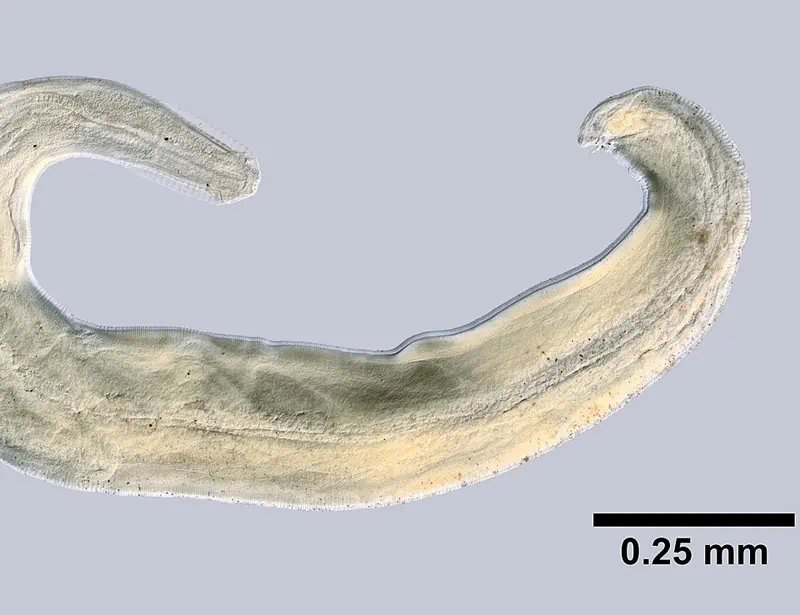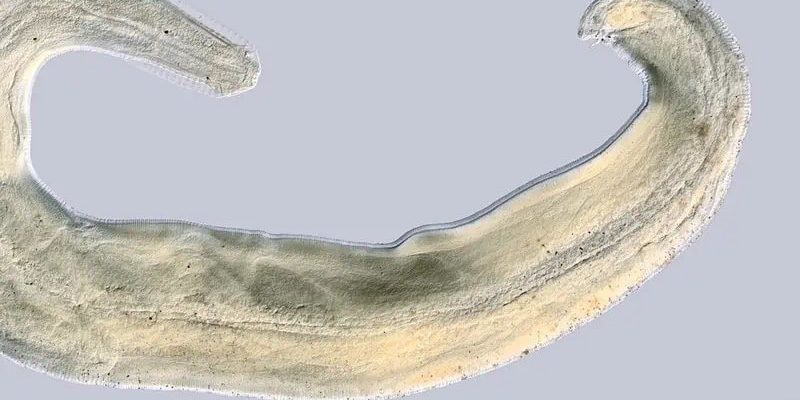
Pinworms, scientifically known as *Enterobius vermicularis*, are primarily known for causing infections in humans, particularly children. But in their natural environment, pinworms play a different role. They are part of a larger ecosystem, interacting with various environmental conditions, soil types, and even other microorganisms. So, what does their wild habitat look like, and what are their preferences? Let’s dig deeper into the world of pinworms and explore the environments they thrive in.
What Are Pinworms and Their Lifespan?
Pinworms are tiny, white, thread-like worms that can grow to about half an inch long. They’re most notorious for causing itching around the anus, which can trigger discomfort and irritability, especially in kids. Once ingested, these little guys make their way to the human intestine, where they lay eggs, completing their life cycle in about two months.
You’re probably wondering why pinworms are crucial in their ecosystems, right? They help break down organic matter, contributing to soil health. When they die, their bodies decompose, enriching the soil and providing nutrients for other organisms. It’s amazing how something so small can have such a significant role in the larger picture of nature!
Soil Types: The Pinworm’s Preferred Home
Pinworms thrive in various soil conditions, but they show a particular preference for sandy or loamy soils. These types of soil provide better drainage and aeration, which are vital for pinworms. Just think about it: if you were a pinworm, would you want to be in muddy, stagnant conditions, or would you prefer a nice, airy environment?
– Sandy Soil: This soil allows water to drain easily, keeping it less saturated. Pinworms favor these well-drained areas as they prevent the overcrowding of microorganisms that might compete for resources.
– Loamy Soil: A mix of sand, silt, and clay, loamy soil offers a balanced environment with plenty of nutrients. Here, pinworms can find the organic matter they need to thrive.
In contrast, pinworms are less likely to be found in heavy clay soils where drainage is poor. These conditions can lead to standing water and a lack of oxygen, making it tough for them to survive.
The Role of Temperature and Humidity
Another factor that influences pinworms’ habitat preferences is temperature and humidity. Generally, these worms like moderate temperatures between 60°F and 80°F (15°C to 27°C). This range mimics their ideal human host environment, where they can thrive.
– Temperature: Like Goldilocks, pinworms prefer it just right! Too hot or too cold, and they can become less active or even die off. This is why understanding their thermal preferences is crucial for anyone studying them in the wild.
– Humidity: Pinworms thrive in humid environments, as moisture helps eggs hatch and supports their life cycle. Areas with consistent moisture levels, such as damp forest floors or wetlands, are ideal habitats for pinworms.
High humidity does attract moisture-loving microorganisms, which can compete with pinworms for resources. Interestingly, this symbiotic relationship impacts how well pinworms can navigate their environments.
Interaction with Other Organisms in Their Habitat
Pinworms do not live in isolation; they interact with various other organisms in their habitats. Their presence, alongside many beneficial microbes, can create a vibrant ecosystem. Here’s how they fit in:
– Microorganisms: Pinworms coexist with other tiny life forms, like bacteria and protozoa. These microorganisms can break down organic matter, creating nutrients that pinworms rely on for food.
– Predator-Prey Relationships: In nature, predation plays a significant role in controlling pinworm populations. Certain nematodes and insects feed on pinworms, keeping their numbers in check. This balance is essential for maintaining healthy ecosystems.
Even though pinworms can become nuisances when they invade human hosts, it’s vital to remember their place in the natural world. They help support the food web by feeding other organisms and enhancing soil health.
How Pinworms Adapt to Their Environment
Here’s the thing: pinworms are adept at adapting to their environments. They’ve developed several traits that help them survive in various habitats. For example, their life cycle is incredibly quick, allowing them to rebound after populations decline. This adaptability is key to their survival in the wild.
Pinworms also have a knack for moisture retention. Their bodies absorb water efficiently, which is particularly crucial during dry spells. This ability allows them to thrive in fluctuating conditions, making them resilient little creatures.
Another striking adaptation is their egg-laying behavior. Female pinworms lay thousands of eggs in the perianal region during the night, increasing the chances of transmission. This clever strategy ensures that even if conditions aren’t perfect, there will still be a new generation ready to thrive.
Potential Threats to Pinworm Habitats
While pinworms have their habitat preferences and survival strategies, they face threats that can disrupt their environments. Here are a few common challenges:
– Pollution: Chemicals and pollutants in the soil can significantly impact pinworm populations. Contaminants can destroy the delicate balance of microorganisms they depend on, leading to a decline in their overall numbers.
– Climate Change: Changes in climate patterns can alter temperature and humidity levels in their habitats. For pinworms, this can mean harsher conditions that push them beyond their comfort zones, potentially leading to local extinctions.
Understanding these threats is crucial for anyone interested in preserving the natural ecosystems where pinworms live. It’s a reminder of how interconnected our environment is and why protecting it is essential for all species.
Pinworms may seem like little troublemakers, but their habitats and preferences in the wild tell a much richer story. They thrive in sandy or loamy soils, enjoy moderate temperatures and humidity, and maintain a delicate balance with other organisms. By recognizing their adaptability and the threats they face, we can better appreciate these small creatures and their role in the ecosystem.
Next time you hear about pinworms, remember that their lives extend far beyond human hosts. They’re essential players in the soil and environment, helping to maintain health and balance. Understanding their habits helps us respect and protect the ecosystems they inhabit. After all, every tiny creature contributes to the intricate web of life around us.

